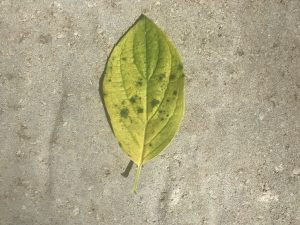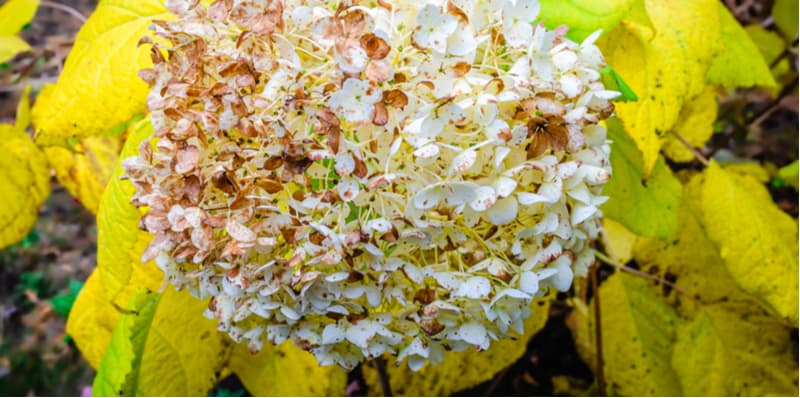10 Simple Techniques For Hydrangea Leaves Turning Yellow
Table of ContentsGetting My Hydrangea Leaves Turning Yellow To WorkThe Greatest Guide To Hydrangea Leaves Turning YellowThe Basic Principles Of Hydrangea Leaves Turning Yellow Things about Hydrangea Leaves Turning YellowThe Best Guide To Hydrangea Leaves Turning YellowThe 8-Minute Rule for Hydrangea Leaves Turning Yellow
Sprinkling your plant with difficult water creates the plant's delegates transform yellow, yet the capillaries will certainly remain green. This condition is called interveinal chlorosis, in which the yellowing is a lot more apparent on the more recent and growing fallen leaves. Nitrogen is a primal nutrient for plants. It is utilized in the building of amino acids and hence adds to DNA and RNA production.Those signs include stunted growth and the yellowing of lower, older fallen leaves in the plant. We're right here to help you with that.
Iron-tone prepares to utilize and requires no blending and will restore deep eco-friendly color to chlorotic yellow plants, FOR ORGANIC GARDENING: Iron-tone is accepted for organic horticulture; It is a registered Organic Input Product meaning it fulfills all needs for organic manufacturing, MADE IN THE U.S.A.: Item of the Espoma Company.
Over-watering and under-watering are both damaging to your plant. Make certain you stick with a watering regimen that'll fit your plant. Remember to not allow the soil completely dry out totally and water the plant as soon as a week.
Our Hydrangea Leaves Turning Yellow PDFs
This is one of the most typical problems that brand-new hydrangea gardeners and experienced experts go through every period. There are a few, really common, aspects that could create your hydrangea leaves to come to be discolored and brownish.
Prior to planting, water the plant. If you have not done this and the plant is already in the ground this will simply take a bit of time and water.
Water in percentages, regularly allowing the water time to drain. As a result of excessive fertilization in summer season, a melt may appear on the fallen leaves. Hydrangeas do not require excessive when it concerns fertilization. They gain from an application of fertilizer in the spring. Feeding in the summertime heat can get difficult.
You might observe some brownish edges on your fallen leaves. The burn appears on the leaves, however that does not indicate that the plant food in fact made contact with the fallen leaves.
Getting My Hydrangea Leaves Turning Yellow To Work
If you have found these crunchy leaves on your plant, you can leave them. Or you can snip them off to assist the appearance of your plant. Hydrangeas can have problems with typical click for source yard pests such as.
Knock the beetles into a bucket of soapy water, or utilize a solid spray from your hose pipe to interrupt the aphids. You can likewise spray soapy water onto all of the plant's surface areas.

Copper fungicides are, however if they are overused they can end up being harmful to your plant. Clip the leaves, and remove them from the yard.
The Ultimate Guide To Hydrangea Leaves Turning Yellow
If they aren't getting enough water, their leaves will brownish. Hydrangeas have a in the midday sun, and jumping back as soon as the sunlight has actually moved and see it here the plants have some time to recoup.
!! Water them slowly so the plants can saturate up that water. Typically in locations where plants have become dried out, the soil is dry and the runoff of water ends up being a problem.
Established plants might require to be watered one to 3 times per week, depending on your conditions. It might seem alluring to spray the leaves down.
Water the base of the plant,. As soon as the plant has actually rebounded, you can return to a regular watering routine. Many varieties and varieties like partial sunlight. Panicle hydrangeas like complete sunlight, but the rest of the group truly likes partial shade. Partial shade supplies concerning four to 6 hours of sunlight.
Hydrangea Leaves Turning Yellow Fundamentals Explained
You can try to avoid fungal conditions by keeping your gardens neat and devoid of particles. Give your yards a great loss and spring tidy up and remove all fallen leave litter from the ground, in addition to from within the crown of the plant. These leaves that will stick around, waiting to attack in the next growing period.

If they aren't obtaining adequate water, their leaves will brownish. Hydrangeas have a in the lunchtime sunlight, and bouncing website link back as soon as the sun has shifted and the plants have time to recover. If this occurs continuously you may discover brownish and crunchy leaves that are sagging. This is their method of letting us know that it requires some extra dampness.
!! Water them slowly so the plants can soak up that water. Usually in locations where plants have come to be dried out, the dirt is completely dry and the overflow of water ends up being a trouble.
What Does Hydrangea Leaves Turning Yellow Mean?
Developed plants might need to be sprinkled one to three times per week, depending on your problems. It may seem alluring to spray the leaves down.
Water the base of the plant,. When the plant has actually recoiled, you can resume a routine watering timetable. The majority of types and varieties like partial sunlight (Hydrangea Leaves Turning Yellow). Panicle hydrangeas like full sun, yet the remainder of the team truly suches as partial shade. Partial shade offers regarding four to six hours of sunlight.